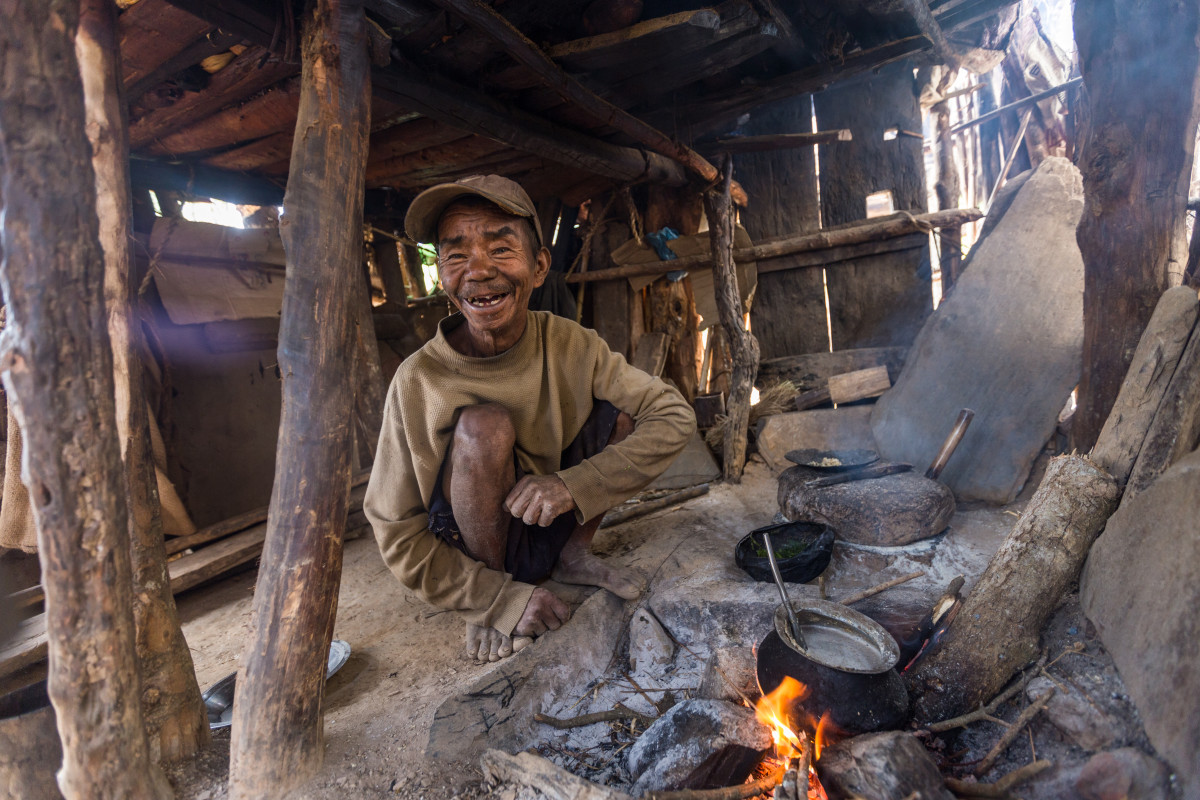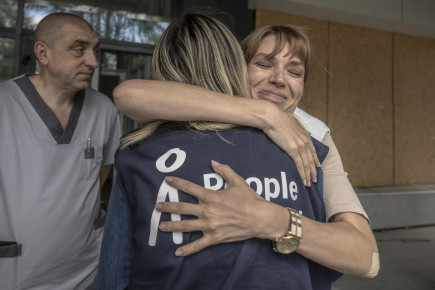“I am now going to have a separate kitchen and bedroom.” Bhakta Bahadur looks forward to his new home 3 years after the earthquake in Nepal.
Published: Feb 11, 2019 Reading time: 4 minutes Share: Share an article“We used to light a fire on one side of the room and cover ourselves with a heavy quilt to sleep during winter,” says 71-year-old Bhakta Bahadur Praja, who has lived alone since his only daughter got married. His house in Dumkin village – situated in the Ichchhakamana rural municipality in Chitwan district and an almost three-hour off-road drive uphill – collapsed during the 2015 earthquake. Lacking the resources to build a new home, Bhakta was left with no option but to live alongside his goats in three different sheds for almost seven months. He eventually constructed a hut out of bamboo, wood, and jute to meet his basic accommodation needs.

The April 2015 earthquake caused extensive damage, with millions of houses in Nepal destroyed. Three years since the disaster, some people have yet to completely rebuild their homes. The reasons for the construction delays are a lack of technical support, a paucity of skilled human resources, limited access to construction materials, rising transportation costs, and the inability of residents to comply with government rules on the reconstruction of new houses.
Human resources & material and technical support for authorities
To combat these challenges, People in Need (PIN) started the Hamro Ghar project funded by the UK aid. In collaboration with consortium partners PHASE Nepal, Scott Wilson Nepal, and Build Change, PIN provides support to the Nepal Reconstruction Authority (NRA), a government body formed after the earthquake to oversee the complete reconstruction of homes by 2020. The project provides a pool of skilled human resources, technical support, construction tools and materials, subsidised transportation costs for remote areas, and help with housing grant applications. All of these measures are designed to speed up reconstruction without leaving anyone behind.
“They said this is my house, and I should see how it’s going to be built. I said do whatever you like,” says Bhakta Bahadur jokingly. Pointing towards his new home, he adds: “I’m now going to have a separate kitchen and bedroom.” Having previously worked as a mason and carpenter, Bhakta now earns a living on his farm growing maize, millet, paddy rice, and mustard and rearing goats.
PIN’s Field Officer Krija Hyoju explains how a housing beneficiary is selected: “For instance, someone who has a physical disability and zero financial ability to build a house gets the highest priority. But we would also consider social vulnerability as an additional criterion when selecting beneficiaries.”
18,505 highly vulnerable households
There are still a large number of households that need assistance with rebuilding. Within the 32 districts affected by the earthquake, the NRA has identified 18,505 households as being particularly vulnerable. After the earthquake, a settlement in Hepchek came under threat after a hill started to crack, precipitating landslides. The NRA marked the settlement unsafe, leading to the evacuation of the whole site.
Households listed under Category III that possess no safe land for settlement are eligible for both land and housing grants under the government’s resettlement programme. PIN, again with the assistance of UK aid, have funded another project – Durable Solutions – which supports the NRA by facilitating the implementation of the resettlement program.
With the support of the Durable Solutions team, seven households from Hepchek migrated to Dumkin village to construct new homes assisted by a NPR 200,000 grant to buy land. “We bought safe land to construct our homes but we got into a dilemma when we had to buy water and rock to build the house. We had to spend the housing grant, so now we’ve no money left to complete the house,” says a grim Hom Bahadur Chepang.
Earthquake-resilient houses for a vulnerable population
After learning about the situation there, the Hamro Ghar project team visited the site. They provided one skilled mason, transportation to convey construction materials from the market to the site, socio-technical support, and a builder trainer to oversee construction work, with members of the community helping each other to construct their new homes. Hyoju says the main objective of the project is to help the vulnerable population build earthquake-resilient homes and to ensure no one is left behind. In addition, the project aims to create awareness within the community for the need to build safer and more functional buildings.
“The good thing about our new location is that we can now easily access a school and hospital. But although we’re constructing earthquake-resistant houses, the grant hasn’t been enough to buy land to meet our agricultural needs, so we’re having to look for other work,” says Hom Bahadur Chepang. “And we can’t go back to our original homes everyday just to farm. It’s too far and the land isn’t safe during monsoon season,” he adds.









